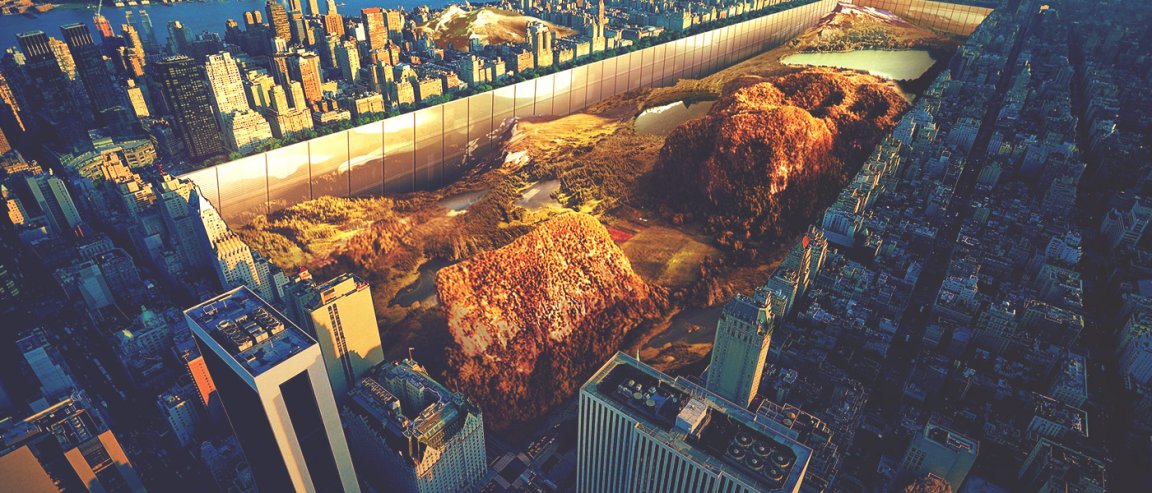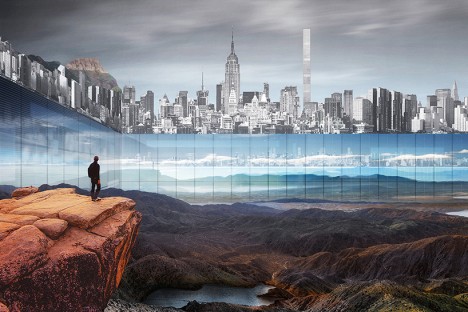
Excavated Landscape
Solutions to the problems related to urban architecture have been many and varied. But a problem that persists is the dull and dreary landscape of the urban jungle. In particular, those living in Manhattan are surrounded by many skyscrapers. The only sizable patch of green is Central Park; however, only a fraction are able to enjoy it on a daily basis, and the skyscrapers are still visible from virtually anywhere within.
This is why Yitan Sun and Jianshi Wu have created a risky proposal: to excavate Central Park.
Specifically, they proposed to dig down to the bedrock beneath Central Park and erect a reflective “horizontal skyscraper” around its perimeter, providing 11 sq/km (7 sq/mi) of peripheral housing with views out over the park.
With its highly reflective glass cover on all sides, the landscape inside the new park can reach beyond physical boundaries, creating an illusion of infinity (true, the reflective nature of the structure may raise concerns related to sunburns, but coatings on the surface should, theoretically, address these issues).

New Housing
Most importantly, the design provides an important feature: Housing. The wall provides additional space so more people could live nearer to the new Central Park. Thus, more people could use it to escape from the daily rigors of life.
The project would also democratize access to the park by providing more people (who live in the complex) with greater proximity while retaining access points along the periphery for rest of the public
While excavating the Central Park seems like a joke, subterranean and underground housing alternatives are being developed, in NYC and in other parts of the world. As cities become more crowded, alternative housing will become more important.
